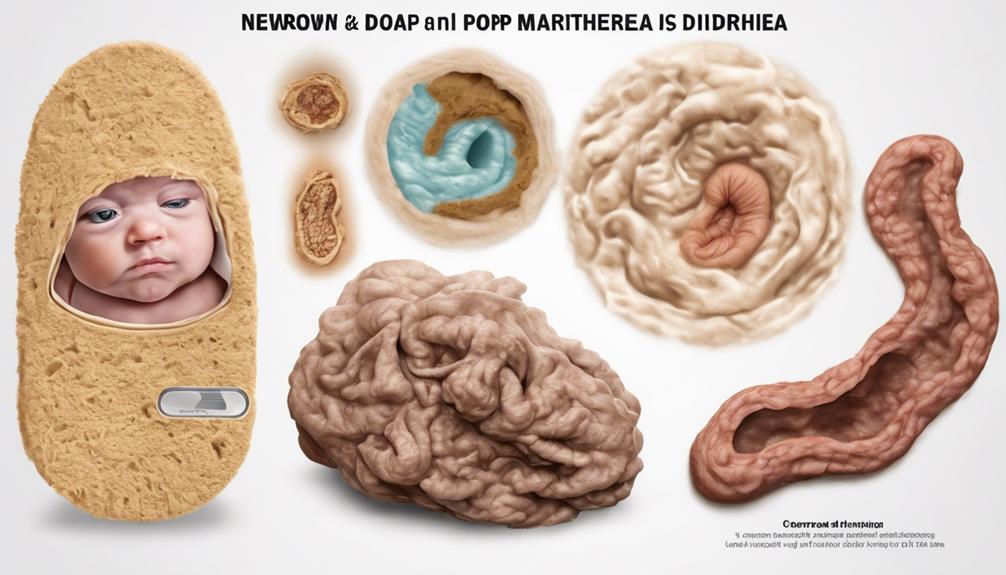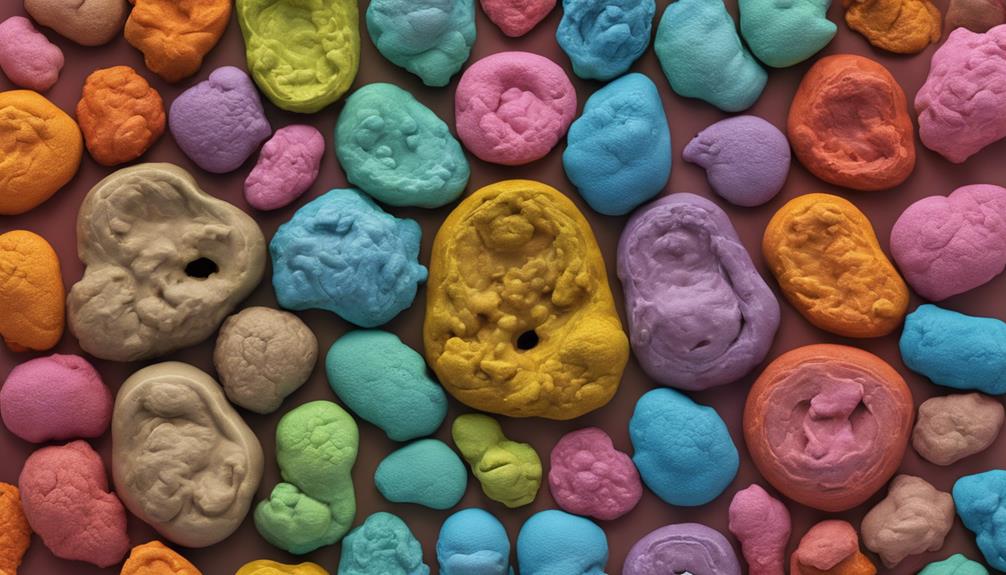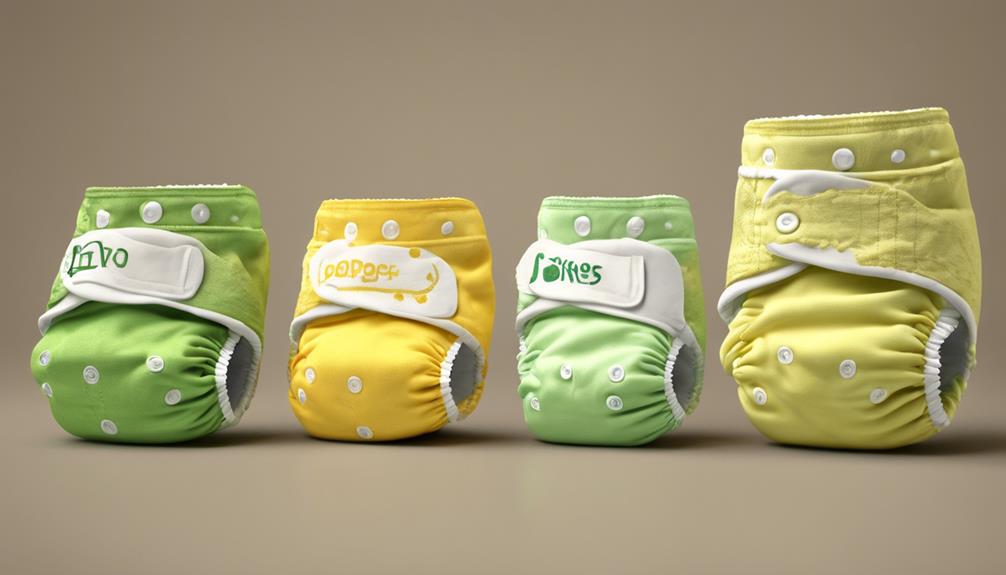When it comes to newborns, distinguishing between diarrhea and normal poop is important for their well-being. Understanding the characteristics of each is essential in providing proper care for our little ones.
From the consistency to the frequency of their stool, there are key factors that differentiate newborn diarrhea from regular bowel movements. But what exactly should we be looking out for?
Let's explore the signs and symptoms that can help us differentiate between newborn diarrhea and normal poop to make sure our babies stay healthy and happy.
Key Takeaways
- Newborn diarrhea: Watery, frequent stools with foul smell, blood, or mucus indicate a problem.
- Normal poop transition: From black meconium to yellowish-green, soft, seedy consistency signifies health.
- Diaper rash risk: Prolonged exposure to stool due to diarrhea can lead to skin irritation.
- Dehydration danger: Untreated diarrhea can cause severe dehydration, necessitating immediate medical attention.
Characteristics of Newborn Diarrhea
Newborn diarrhea is identified by the presence of frequent watery stools, typically exceeding three per day. In this condition, the stools may contain mucus, blood, or emit a foul smell. The presence of these characteristics in the newborn's stool warrants attention as they can indicate an underlying issue. It's important to note that normal newborn poop undergoes a shift from black meconium to yellowish-green within the first few days of life. However, if the stools remain watery, frequent, and show abnormal signs like blood or mucus, it's essential to consult a healthcare provider promptly.
Diarrhea in newborns poses a risk of dehydration due to the excessive loss of fluids and electrolytes. This can be particularly dangerous for newborns as they're more vulnerable to imbalances in their body's hydration levels. Monitoring the newborn's stools closely and seeking medical advice if diarrhea persists is vital to prevent complications and safeguard the infant's well-being.
Appearance of Normal Newborn Poop
Upon shifting from meconium, regular newborn poop undergoes a distinct change in color and consistency, signifying the initiation of digestion.
- The shift from meconium to normal newborn poop is characterized by a change from greenish-black to yellowish-green hues.
- Regular newborn poop is sticky and tarry in texture due to the presence of mucus, amniotic fluid, and dead cells from the intestines.
- This change, usually occurring around 2-4 days of age, indicates that the newborn's digestive system is processing breast milk or formula.
- Unlike regular stool, meconium has no strong odor, aiding in the differentiation between the two types of excretions.
- The newfound yellowish-green color of newborn poop signifies a healthy digestive process, essential for the baby's growth and development.
Factors That Differentiate Diarrhea Vs. Normal Poop
In distinguishing between diarrhea and normal poop in newborns, evaluating the consistency, frequency, smell, and presence of blood or mucus is important. Newborn diarrhea presents as watery stools that are more frequent and emit a foul odor. This type of poop may also contain blood or mucus, indicating potential issues.
Conversely, normal baby poop undergoes a color change from greenish-black meconium to yellowish-green stools shortly after birth. Healthy stools for babies are soft, seedy, and have a sweet smell, reflecting the digestion of breast milk or formula.
If you notice any blood, mucus, or a significant change in stool consistency, it could be a sign of newborn diarrhea. It's essential to monitor your baby's stool closely and seek medical advice if you suspect diarrhea. Prompt attention is important to prevent dehydration and complications. Remember, consulting a doctor is always recommended when in doubt about your baby's poop.
Consistency and Frequency of Newborn Stool

The consistency and frequency of stool in newborns provide important insights into their digestive health and overall well-being. When considering newborn stool, it's vital to note the key differences between normal poop and newborn diarrhea.
Here are essential points to distinguish between the two:
- Normal Poop: Begins as black meconium, changing to yellowish-green stools within days; soft, seedy, and slightly runny consistency.
- Watery Diarrhea: Characterized by loose or watery stools, more frequent than typical newborn bowel movements.
- Infection: Diarrhea in newborns can indicate an underlying infection, requiring prompt attention.
- Frequency: Normal newborn poop is passed multiple times a day, while diarrhea stools occur more frequently.
- Consistency: Mustard-yellow, seedy consistency is typical for normal newborn poop, contrasting with the markedly different consistency of newborn diarrhea.
Understanding these distinctions in the consistency and frequency of newborn stool is critical in evaluating a newborn's digestive health and identifying any potential issues early on.
Signs to Watch for in Newborn Diarrhea
Monitoring for specific signs is essential in identifying newborn diarrhea promptly and ensuring appropriate intervention. In newborns, signs of diarrhea may include watery stools that are more frequent than usual. Additionally, foul-smelling stools with mucus or blood are concerning indicators of newborn diarrhea. It's important to differentiate between normal meconium shift and persistent diarrhea.
Diaper rash, often a result of prolonged exposure to stool due to diarrhea, can also be a sign to watch for. Dehydration is a severe complication that can arise if diarrhea isn't addressed promptly. If any of these signs are present, consulting a healthcare provider is necessary to evaluate the newborn's condition and determine the appropriate course of action.
Prompt recognition and management of these signs are essential in ensuring the well-being of the newborn and preventing complications associated with diarrhea.
Frequently Asked Questions
How to Tell the Difference Between Diarrhea and Soft Stool in Babies?
We can differentiate diarrhea from soft stool in babies by closely observing stool frequency, consistency, color, and associated symptoms like dehydration signs. Monitoring hydration status, weight changes, and any unusual characteristics in stool can aid in distinguishing between the two.
What Does Diarrhea Newborn Poop Look Like?
Diarrhea newborn poop is watery, frequent, and may contain mucus or blood. It differs from normal stool in consistency and frequency. Seek medical advice if you suspect newborn diarrhea. Early intervention can prevent dehydration and complications.
What Is the Difference Between Normal Feces and Diarrhoea Feces?
We differentiate normal feces from diarrhea by examining consistency, color, and odor. Normal stools are firm, yellow-green, and lack a foul smell. Diarrhea feces are watery, frequent, may contain mucus or blood, and have an unpleasant odor.
How Do I Know if My Baby Has Diarrhea or Breast Milk Poop?
We can distinguish between newborn diarrhea and breast milk poop by noting watery stools, increased bowel movements, and foul odor in diarrhea. Healthy breast milk poop is yellow, seedy, and sweet-smelling, indicating normal digestion in infants.
Conclusion
To summarize, distinguishing newborn diarrhea from normal poop is essential for early detection and treatment of potential bowel infections.
By monitoring for mucus, blood, or bad odors in stools, caregivers can intervene promptly to prevent complications.
Remember, in the world of newborn poop, spotting the red flags is like finding a needle in a haystack – necessary for guiding proper care and ensuring best health outcomes.










